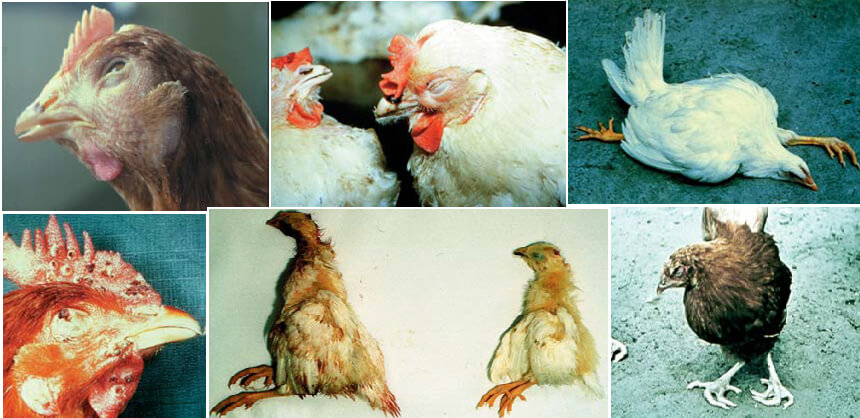What is Gangrene?
Let is know what is Gangrene? When dead (necrosed) tissue is attacked by saprophytic bacteria, it undergoes putrefaction (decay). Saprophytes are those organisms which live on decaying or dead organic matter. This putrefaction of dead tissue in the living birds is called ‘gangrene: the best example in poultry being gangrenous dermatitis’.

Tumour/Neoplasm/Cancer
In certain circumstances, following an injurious stimulus, tissue may not undergo necrosis or inflammation, but may proliferate (grow) without any control of the body, serve no useful function, and kill the bird. This growth of new cells is called a tumour’ a ‘neoplasm’,or “cancer’; the best examples in poultry being ymphoid leukosis, Marek’s disease, and reticuloendotheliosis.
Lesion
Following disease, tissue undergoes abnormal changes in its structure and function. An abnormal structural alteration in the tissue, whether gross or microscopic, is called a of “lesion’. Certain lesions are specific of a disease and indicate without doubt the cause a particular disease. Such a typical lesion (or lesions) is calleda ‘pathognomonic lesion’.
Such lesions are most helpful in ariving at a diagnosis during the postmortem examination, particularly under field conditions. Examples include: swollen, inflanted, haemorrhagic bursa in Gumboro disease; pinpoint haemorrhages on the glands’ of proventriculus in Ranikhet disease; and white chalky coating of urates on heart, liver, kidney and at other places in the body cavity in gout.
What is Gangrene? Also see Inflamation.
Symptom
An abnormal change in the structure of an organ or tissue leads to its abnormal function. This abnormal function shows itself as a ‘symptom’ of the disease. Thus. symptom is a manifestation of an abnormal function; examples in chicken include fever, difficult breathing, swelling, loss of appetite, diarrhoea, lameness, etc.
Concluding Remarks
The diseases caused by infectious agents, nutritional deficiencies, and also those brought about by metabolic disorders. Our article also deals witn miscellaneous conditions, such as heat stress, vices, effects of ammonia and several others. All illnesses and ailments affecting poultry are covered. The sequence in which various diseases have been described includes: first, a brief introduction of the infectious agent or disease, followed by cause of that disease, its spread, development, symptoms, postmortem findings (i.e. gross lesions), diagnosis, treatment, and control. While the main emphasis is on diagnosis, treatment, and control, other aspects of the disease have also been dealt with fairly adequately for those interested to know more. The descriptions of the diseases, though contain the latest information, all attempts have been made to present the complicated matter in a most simplified manner so that it is readily understood. Also, to the extent possible, technical terms have been used to a bare minimum so that the text is easily grasped. Only those terms that were essential or unavoidable, have been used. Although the technical terms, wherever they occur in the text, have been explained within brackets, they have also been given at one place in the next following article.
What is Gangrene? To watch Video click here.

1 thought on “What is Gangrene?”